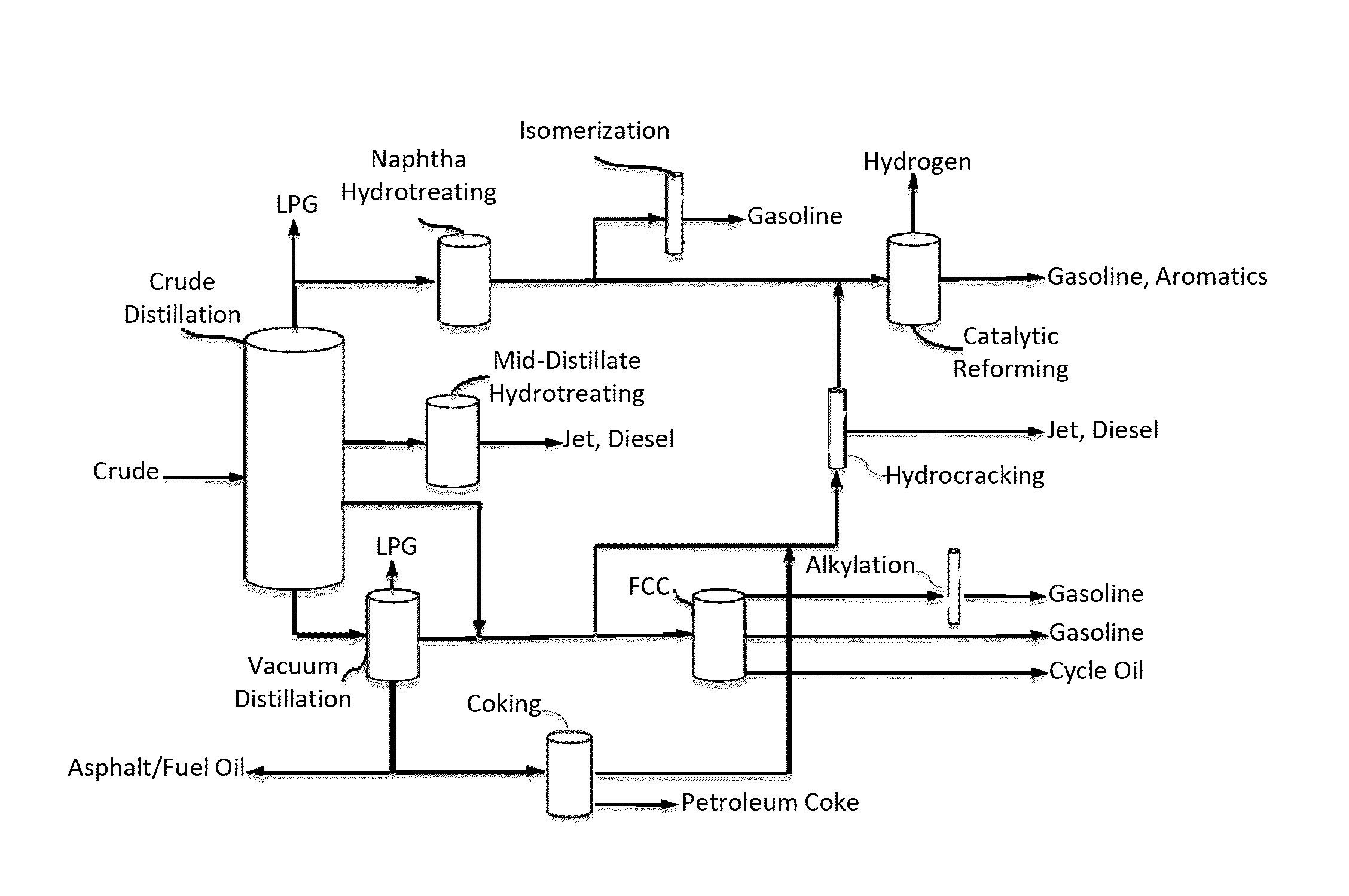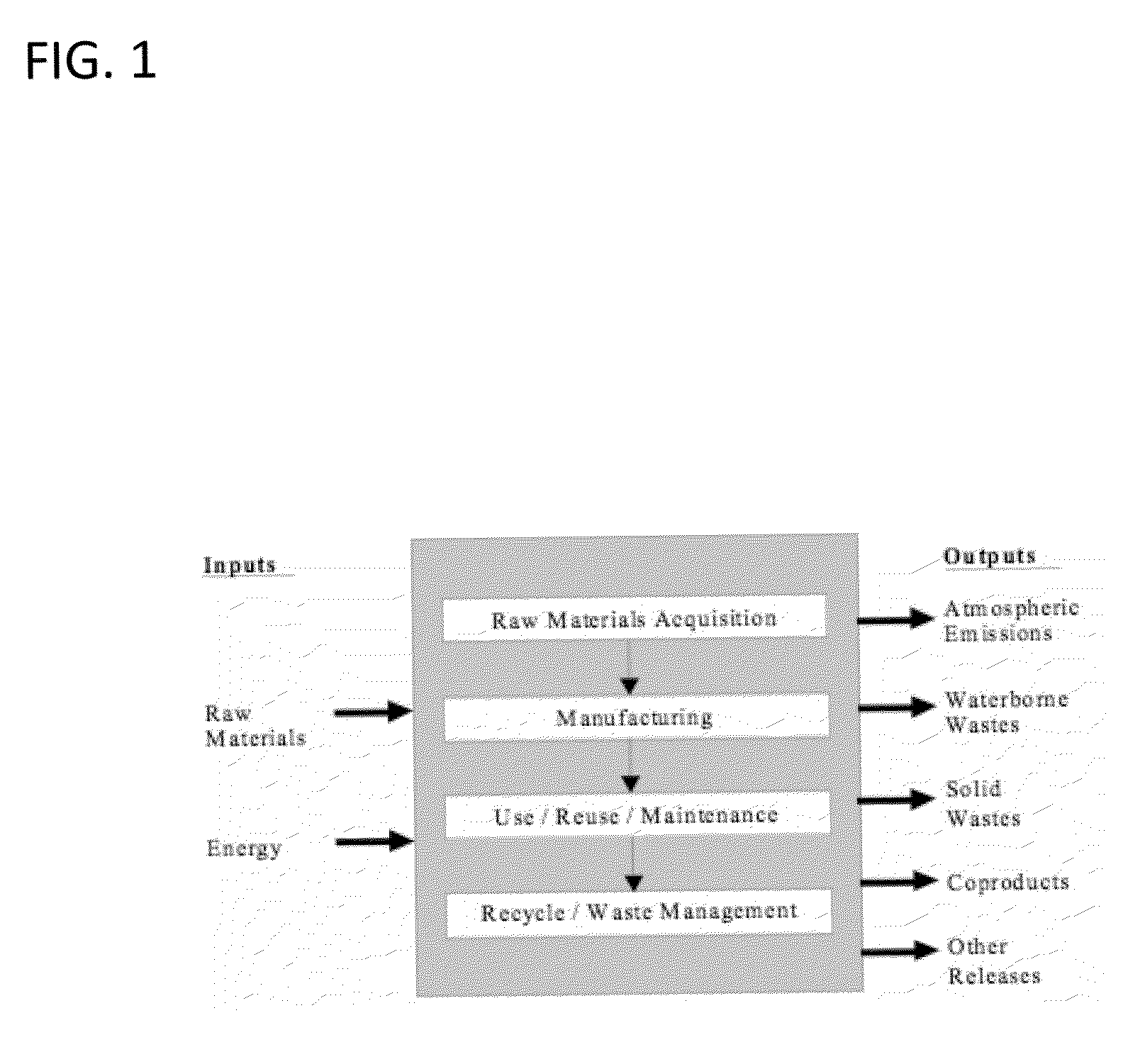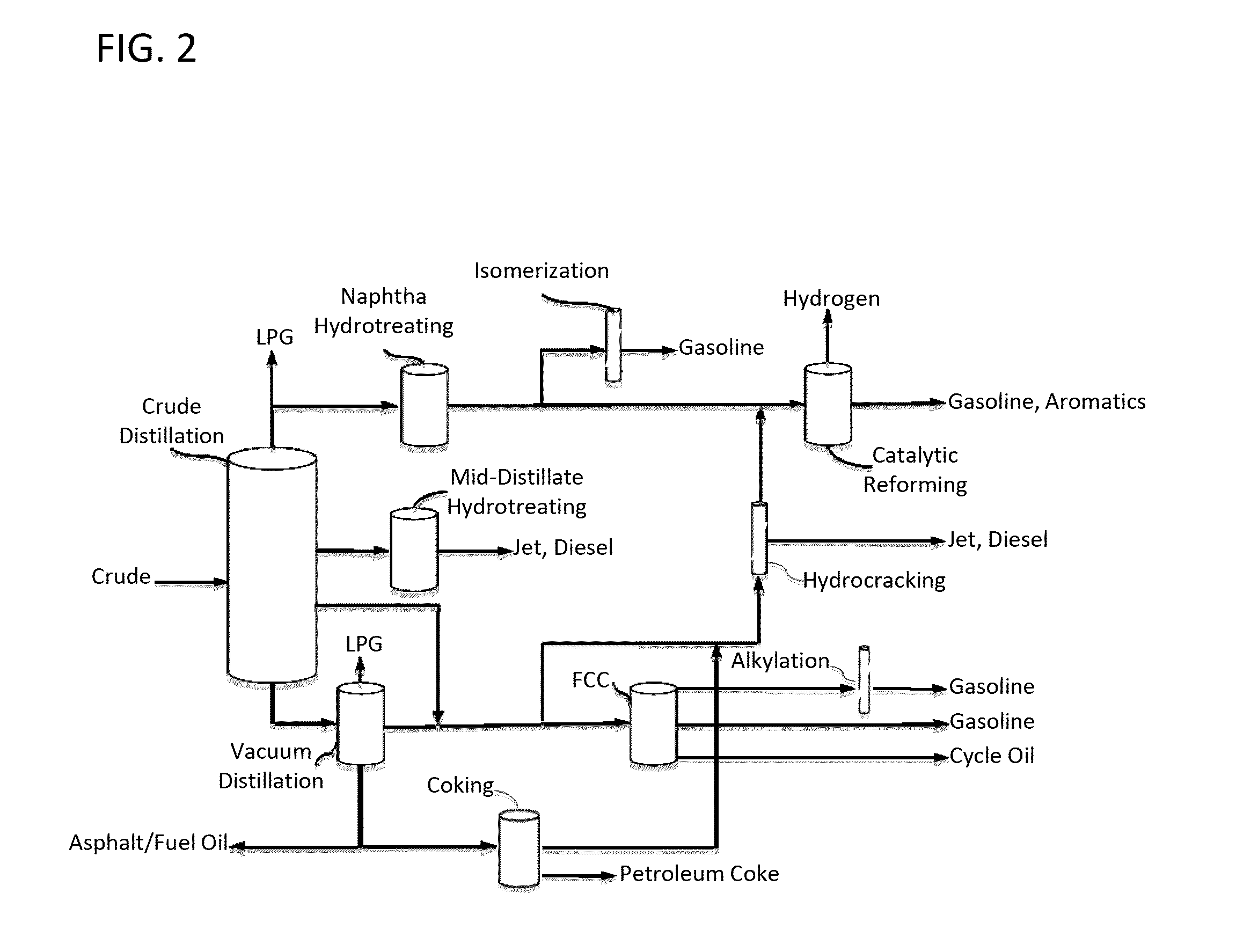Integrated carbon management system for petroleum refining
a carbon management system and petroleum refining technology, applied in the direction of machines/engines, insulation, borehole/well accessories, etc., can solve the problems of material impact on the cost structure and profitability of petroleum refining, the impact of gases has not been significant, and the impact of regulatory scrutiny on petroleum refining has increased
- Summary
- Abstract
- Description
- Claims
- Application Information
AI Technical Summary
Benefits of technology
Problems solved by technology
Method used
Image
Examples
Embodiment Construction
[0026]The current invention is directed to an environmentally and economically more efficient petroleum production / refining / utilization system for managing carbon emissions at all stages of the petroleum lifecycle. More specifically, the system of the current invention integrates the release of carbon from refineries such that those sources of carbon may be utilized in a manner beneficial to the efficiency of the overall petroleum processing lifecycle.
[0027]Prior to discussing the specific elements of the current invention, it is important to provide an explanation of the concept of lifecycle analysis. The term “life cycle” refers to the major activities in the course of the life-span of petroleum from its refining, transport and use, to its final disposal, including the raw activities required to extract the petroleum. In turn, life cycle assessment is a “cradle-to-grave” approach for assessing petroleum systems. “Cradle-to-grave” begins with the gathering of raw materials from the...
PUM
| Property | Measurement | Unit |
|---|---|---|
| temperatures | aaaaa | aaaaa |
| temperatures | aaaaa | aaaaa |
| diameter | aaaaa | aaaaa |
Abstract
Description
Claims
Application Information
 Login to View More
Login to View More - R&D
- Intellectual Property
- Life Sciences
- Materials
- Tech Scout
- Unparalleled Data Quality
- Higher Quality Content
- 60% Fewer Hallucinations
Browse by: Latest US Patents, China's latest patents, Technical Efficacy Thesaurus, Application Domain, Technology Topic, Popular Technical Reports.
© 2025 PatSnap. All rights reserved.Legal|Privacy policy|Modern Slavery Act Transparency Statement|Sitemap|About US| Contact US: help@patsnap.com



